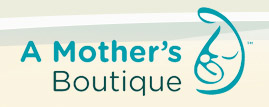By Donna Bruschi
When my baby was 8 days old, I started feeling exhausted. I had felt pretty good up until that point. I had been going to the store and to the pediatrician and to the Lactation consultant (because nursing was not going well). His diapers were pretty dry and I had painfully sore nipples. That morning, I woke up to painful breasts as well and over the course of a day developed angry red streaks on my left breast and red near the nipple on my right. I had developed mastitis.
Mastitis is a common problem among breastfeeding mothers. The exhaustion, aching muscles and fever mimic the flu but the red streaked breasts and tender spots make mastitis unmistakable. Although there are several contributing factors, the most common one is exhaustion. Most mothers with mastitis try to do too much. Even mothers who feel great, may bring on mastitis simply by skipping naps. Mastitis is more common around the holidays when added pressures pile onto an already stressed situation. Other contributing factors include over-abundant milk supply, fussy babies and babies who who don’t latch on correctly. Mastitis can come on rather unexpectedly the first time. The mother may notice breast soreness, flu-like symptoms, and the hard lump of a plugged milk duct before full blown mastitis sets in, or she may not.
 Healing mastitis includes plenty of rest, canceling all activities and going to bed. The mother should continue to nurse frequently to unblock the plugged duct and drink plenty of water. Hot compresses can relieve soreness and cold compresses can help shrink overactive milk production, if the mother thinks it is a contributing factor. If the mother doesn’t feel better within a day or so of sleep and nursing, she should go to her healthcare provider who will probably prescribe antibiotics and more rest.
Healing mastitis includes plenty of rest, canceling all activities and going to bed. The mother should continue to nurse frequently to unblock the plugged duct and drink plenty of water. Hot compresses can relieve soreness and cold compresses can help shrink overactive milk production, if the mother thinks it is a contributing factor. If the mother doesn’t feel better within a day or so of sleep and nursing, she should go to her healthcare provider who will probably prescribe antibiotics and more rest.
In my case, I was already on post surgical antibiotics and listened to my body, which needed some rest. The mastitis cleared up pretty quickly and I continued getting my son to latch-on better over the next week or so. He went on to nurse for 3 more years. I had a few plugged ducts after that but none ever developed into full blown mastitis. In hindsight, I should have had a home visit from a lactation consultant or visiting nurse as soon as we came home from the hospital. I would have had better latch-on and more energy.
In cases of recurring mastitis, mothers should investigate poor latch-on or sucking problems. She can also work on reducing stressful activities and situations. A La Leche League Leader can listen, carefully evaluate the particulars and give support and guidance. For a local LLL Leader, visit the La Leche League website.
Donna Bruschi is the mother of three adolescents, including twins. She is a Resonance Repartterning practitioner who specializes in parenting. She supports parents who want to love and communicate with their children from conception into adulthood. She leads several support groups in New Paltz, NY including La Leche League and Parenting Teens. For more information about classes and sessions visit her website.
Have you had mastitis? We’d love to hear your experiences. Do you have any tips that you can share with other moms? Please leave a comment on this post and share your journey!











[…] it personnally. If you have this breast infection, or might be leading up to it, head over to the Mommy News Blog for advice on how to combat […]
[…] We have asked three moms to tell us about their experiences. You can see one of the other two posts here and be sure to come back next week for the […]
[…] We have asked three moms to tell us about their experiences. You can see the other two posts here and […]
I started to develop mastitis about 2 weeks postpartum, and my midwife speculated that it was brought on by exhaustion (like the article says) and stress. (Hmm, the fact that my mother-in-law was visiting for the first time ever may have had something to do with that….) Anyway, the point is that the midwife recommended that I slice fresh potato and put this on the tender parts of my breasts. (She said garlic would work too but that baby may not like it).
It was so amazing! I would keep the potato in the fridge, and replace when the slices grew warm on my chest. The cool was so relieving, and apparently helps draw out milk from clogged ducts. Worked like a charm, and I never had problems after that.
I got mastitis kind of late in the game, it seems… my daughter was a little over three months old when I plugged a couple of ducts running in an ill-fitting sports bra (my usual one was dirty). I’m no stranger to plugged ducts but it didn’t seem like my usual methods (hot compresses, nursing solely on that side, massage, etc) were working and soon it became hot, swollen and red. I had minor sweats/chills that night and I woke up feeling pretty crappy the next day. It soon progressed to running a fever of around 104 – 105 and I dragged myself to the nearest walk-in clinic (as my OB had no appointments until the afternoon) for some antibiotics. The fever lasted two full days before it broke down to something more reasonable. The combination of medication and the continuance of hot compresses/massage/frequent nursings helped me get over the infection.
The poor-fitting bra started it and stress helped elevate it to mastitis (it probably doesn’t help that I’ve struggled with oversupply with both of my children). I will have to say that I had to laugh at this article in one spot — “Healing mastitis includes plenty of rest, canceling all activities and going to bed.” I’d love to, but I have a totally unsympathetic four-year-old and an equally unsympathetic three-month-old… there’s no such thing as ‘canceling all activities and going to bed.’